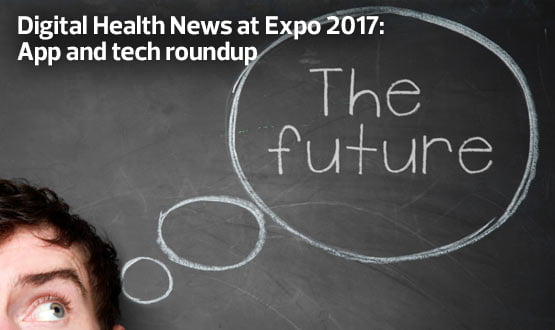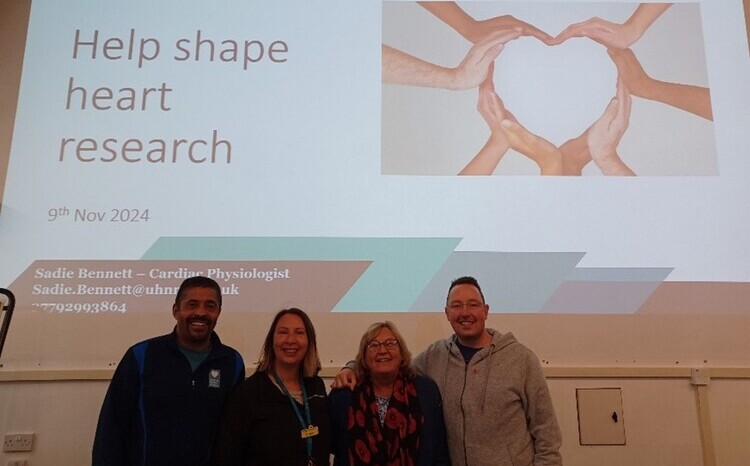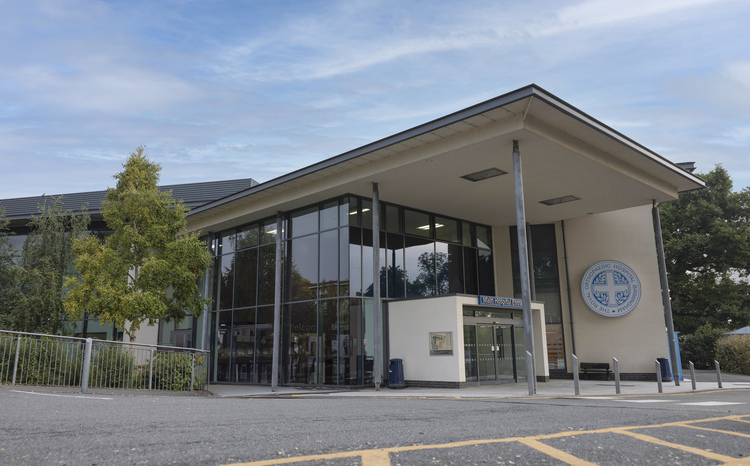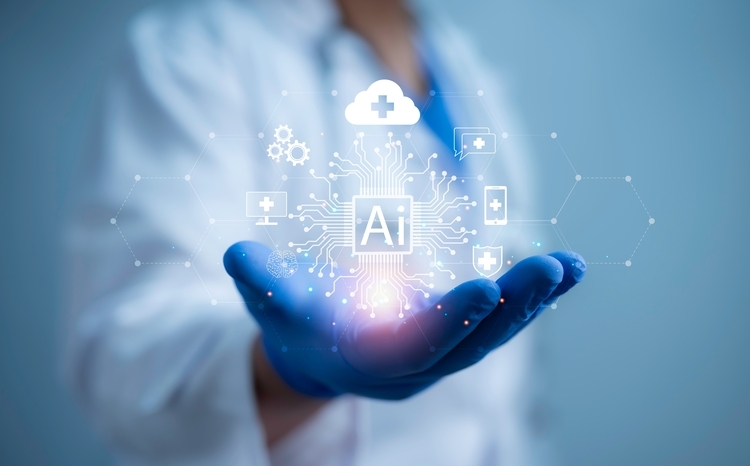AI, self-care apps and tech, e-referrals: the vision of the future at Expo

Imagining quite where technology will take healthcare is far from a straightforward task. But when Digital Health News visited exhibitors in the innovator zone at last week’s Health and Care Innovation Expo, a few key themes emerged: predictive AI, self-care apps and tech, and e-referrals among them. Claire Read reports.
Professor Tony Young had arguably the hardest job of any speaker at the 2017 Health and Care Innovation Expo, and he knew it.
As he took to the stage in the #NHS70 Hub – designed to celebrate the evolution of the health service as it nears its seventieth birthday, and to explore where it will go next – he told delegates he had nothing short of “an impossible task.”
The task in question: predicting where technology will take the NHS in the next 70 years. Just how might IT support the healthcare professionals and citizens of the UK come 2088?
From Babelfish to machine learning
Before attempting to answer the question, Young pointed out just how bad people are at generally predicting the future.
Douglas Adams might have been able to imagine a supercomputer, but he struggled to imagine a device which could understand language.
Instead, Britain’s foremost science fiction writer dreamt up the Babelfish, an alien being which could perform instant translations of any language. Yet only four decades later, Young pointed out that machine learning and artificial intelligence (AI) means computer understanding of human language is becoming a reality.
He may not have held out much hope of being able to accurately predict the next 70 years, but Young was willing to rise to the challenge. What principles did he argue would be central to healthcare in the future?
“I think predictive diagnostics,” he said. “Informing our citizens more. And more and more our patients in control of where they want to go with their healthcare.”
Predictive diagnostics
When Digital Health News wandered over to the conference’s innovator zone, it certainly seemed as though those currently working on new technologies are being guided by the principles Young outlined.
Take Bering Limited, a London-based firm that is trying to use AI to predict patient outcomes. In 2014, it won a small business research initiative (SBRI) grant to work with Somerset CCG and the South West Academic Health Science Network on a project to identify individuals at risk of an unplanned emergency admission.
Ignat Drozdov, the company’s managing director, told us the aim is to now take the predictive model into GP practices. “So when a patient comes into practice there are a few, simple questions about their overall wellbeing and their health experience.”
Once the questions have been answered, the software can give a prediction as to how likely it is the individual will experience an emergency admission.
“In addition to targeting those people who are at very high risk of having an admission, it’s also about looking at people with chronic conditions who have low to moderate risk and then identifying means of intervention or signposting to a particular service to help lower than risk. And essentially facilitating a self-care approach as well.”
Self-care
Drozdov was far from the only one whose interest was in technology which helps patients to help themselves. Over at the AliveCor stand, Francis White was showcasing Kardia Mobile – a small device which links to a smartphone app and allows users to record, review and share their heart rates with healthcare professionals.
“Our product is designed to be a tool for self-care, self empowerment, and to really uncover your own cardiac profile risk before things happen,” said White.
While many users buy the device themselves, he said it’s also used in clinical practice – and expressed the hope more NHS organisations would consider providing it to relevant patients.
The team at Aseptika Ltd are also trying to find ways to get monitoring technology in the hands of people who would benefit from it. The company is collaborating with the local authority in Huntingdon, its local academic health science network, a cancer charity, and a leisure centre provider for Activ8rlives, through which the firm loans monitoring devices to people taking rehabilitation classes.
So long as the individual comes to the paid exercise class every week, and takes at least four sets of reading a week, they get to keep the equipment free of charge.
Kevin Auton, the firm’s managing director, told us it’s an excellent way to increase people’s comfort with IT. “We teach very slowly, at their pace, and they’ll work and work at it because they’ve got a reason to engage. Then we find they start using online access to GP systems – they become activated.”
Building digital literacy
DrDoctor are also considering ways to deepen users’ comfort with digital. The platform allows patients to view, change and schedule their own outpatient appointments. But Josh Karanasios, who works on the business development side of the company, said these functions could be a means to deeper digital literacy.
“The patient appointment is the hook,” Karanasios told us. “We use that to onboard people. But once you onboard everyone, they’re already going to be used to communicating with you using the system, then you can layer additional layers of innovation on top of that.
“So you can take them down this path where they’re doing basic stuff to begin with, but then they are presented with, hey, fill out this form and then based on your responses we can ascertain whether or not to treat you more urgently or whether to prioritise someone else.”
The need for speed
Not all solutions on show at Expo were patient facing, of course. At the Medefer stand, Digital Health News heard about a platform which allows GPs to directly liaise with consultants.
The firm is working with two CCGs in the north, three in London, and one in Luton as well. According to Edward Bosonnet, a GP and one of the company directors, the idea now is to develop a model whereby it provides “a virtual hospital”.
“Instead of simply offering advice and guidance to GPs, we actually take on the role of creating almost a virtual system. So we can arrange a test for a patient and, if the test is normal, discharge your patient back to primary care without ever having to go to the hospital.
“Or if the test does pick something up, we can actually get them to hospital with a diagnosis for treatment and management.” It should, Bosonnet said, mean a much speedier service for patients.
Electronic referrals
We spoke to several organisations attempting to speed up healthcare delivery through digital. Among them was Cievert. Their flagship product is Casper Oncology, which allows web-based management of radiotherapy referrals.
It’s a process which managing director Chris Kennelly told us would normally involve eight to 10 handoffs of information between multiple staff groups. “Lots of opportunity for that piece of paper to be lost or missed. So effectively we’ve digitised that process.”
Smoother referrals were a theme at the IEG4 stand too. In collaboration with five CCGs in Cheshire, the firm has created a digital assessment for continuing healthcare – care provided out of hospital but free of charge by the NHS rather via social care.
“Previously, referrals were coming via e-mail, phone calls, fax,” said Rachel Singleton from the continuing healthcare and complex care team at the five CCGs. “This will help us dictate the way referrals come in – we’ll have one central place to locate these patients, and be able to track exactly where that patient is up to.”
The hope is that the software – called CHC2DST – will make the whole process more fluid, and reduce delayed transfers of care from hospital due to problems with documentation.
The solution has clearly impressed Matthew Swindells. NHS England’s national director for operations and information gave IEG4 a namecheck in his keynote address. “I’ve seen, as I’ve walked around here, the amount of innovation that’s going on, both in terms of service delivery, but also in terms of tech,” he said.
As Professor Young said, where that innovation might lead us in 70 years’ time is likely beyond our imagination. For now, know that AI, technogically supported self-care and smoother referrals are a safe bet of the themes for the next few years at least.




